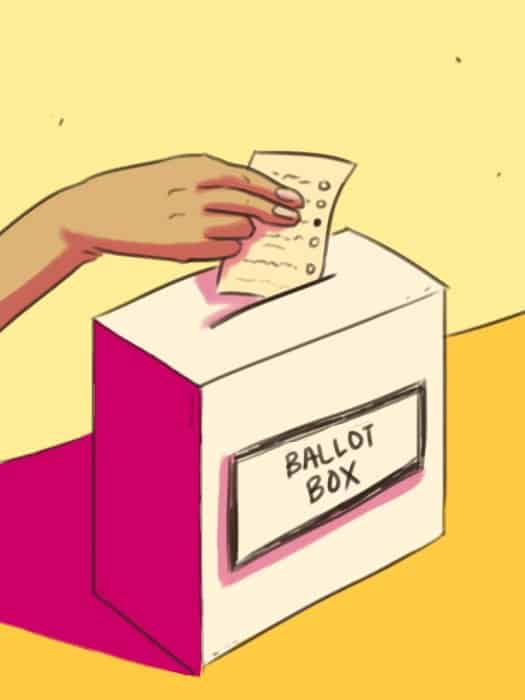I voted for the first time in my life on June 12 during the recent Ontario provincial election. The process itself was simple enough — I presented my voter card and my driver’s license as identification, marked an “X” on the ballot, and left the polling station feeling satisfied. Though the act of voting took less than five minutes of my time, I understood the significance of exercising my civic right to vote — a right that all Canadians are privileged to possess as citizens in a democratic country.
The provincial election, in which I — along with 4.8 million other Ontario residents — cast my vote, was decidedly more complicated. It was an electoral contest that conveyed negativity at every turn as the incumbent Liberal government faced criticism from both the Progressive Conservatives (PC) and the New Democratic Party (NDP) regarding a slew of government spending scandals.
The Liberal Party responded in a similar manner by demonizing PC leader Tim Hudak’s proposals for balancing the provincial budget and stimulating economic growth. As partisan attack ads dominated television airwaves for weeks, many Ontarians, including myself, were left contemplating which party represented the lesser evil.
In the face of such overwhelmingly aggressive rhetoric, projected voter turnout for this election was expected to fall short of the 48 per cent turnout in 2011. However, Elections Ontario has estimated that 52 per cent of eligible Ontarians participated in last Thursday’s election, which yielded a significant victory in the form of a majority government for Kathleen Wynne’s Liberals.
This figure represents a slight deviation in the longstanding trend of declining voter turnout in Ontario provincial elections dating back to 1990, when voter turnout stood at 64.4 per cent. Though this development may seem encouraging, it still means that nearly half of all Ontarians who could have voted, did not set foot in a polling station — a fact that does not bode well for the long-term vitality of the democratic institutions that comprise our provincial government. The declining trend in overall voter turnout is particularly alarming when considering the fact that voters between the ages of 18 and 25 tend to have the lowest rate of participation in elections — 38.8 per cent of eligible voters in this demographic voted in the 2011 provincial election.
The persistence of low turnout rates among young voters coincides with a prevailing sense of apathy among Ontario’s youngest voter demographic. The source of this apathy is likely the perceived disconnection between Queen’s Park and young adults in this province. Since political parties tailor their electoral platforms to please their base of core supporters and to gain the support of undecided voters who are likely to vote, the needs and concerns of young voters are often marginalized in the policy-making process. These dynamics create a vicious cycle that does not make for a political culture that is conducive to youth-oriented civic engagement and activism. The question is: how can we end this cycle?
There are no easy solutions to the democratic deficit that exists in Ontario and throughout the rest of Canada, though the reversal in the trend of declining turnout among Ontario voters offers a glimmer of hope for the future.
It could be reasonably estimated that most of the 4 per cent increase in voter turnout consisted of university and college students who took to the polls in order to vote against the PCs, given Tim Hudak’s pledge to eliminate the 30 per cent-off tuition grant for post-secondary students. Though the students who voted strategically for the Liberals may have acted out of individual interest rather than upon civic duty, the results of this election might allow Canadian political parties to consider improving their efforts at connecting with young voters.
Nevertheless, it is up to families, schools, and media outlets to teach Canada’s future generations the importance of political awareness and civic responsibility. Increasing youth voter turnout is the first step towards fostering a more politically active and engaged citizenry. Hopefully, the achievement of this goal will ensure that provincial and federal governments continue to reflect the will of the Canadian people well into the future.
Avram Englert is a fourth-year student at University College studying political science and international relations.


